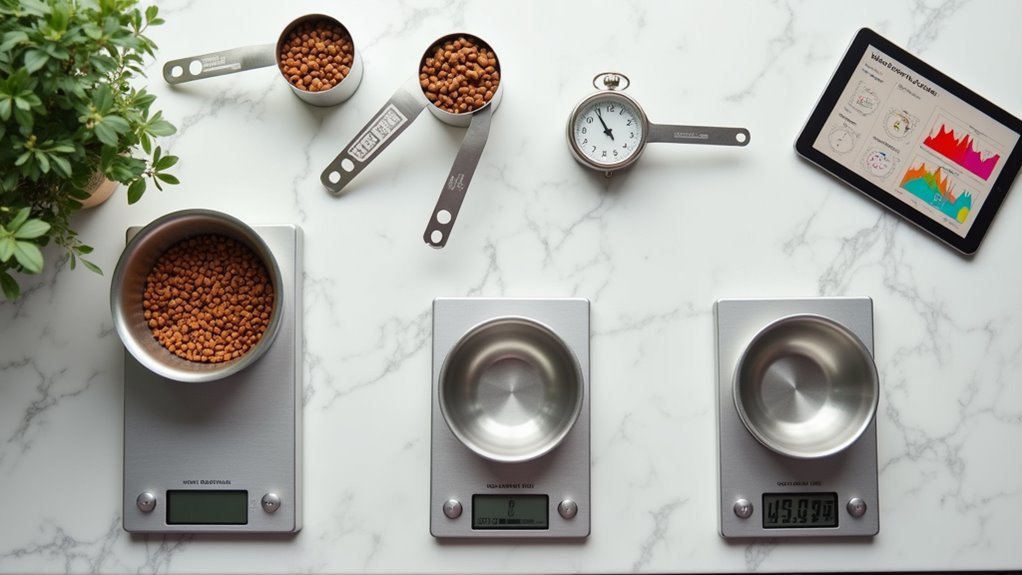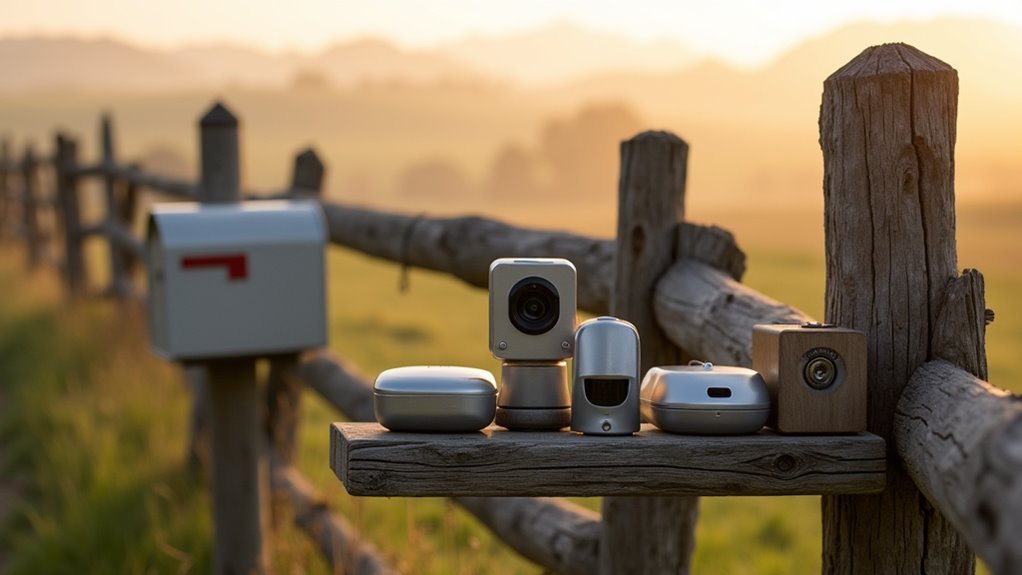You’ve probably noticed your pet’s eating habits change over time, but without proper tracking, you’re missing vital patterns that could reveal health issues before they become serious. Whether you’re concerned about weight management, monitoring a medical condition, or simply wanting to optimize your furry friend’s nutrition, the right data collection approach makes all the difference. These three strategies will transform how you understand your pet’s relationship with food.
Establish Clear Feeding Metrics and Goals

While maintaining your pet’s health requires attention to many factors, establishing clear feeding metrics forms the foundation of effective dietary management.
You’ll need to define specific measurements like frequency of feedings, portion sizes, and timing to create a baseline for your pet’s daily routine. Set realistic goals that align with your pet’s activity levels and current healthy weight status.
Track of your pets’ eating patterns by documenting meal times and amounts consumed. This accurate information helps you identify what’s normal versus concerning changes.
Document your pet’s daily meal times and portions to establish normal eating patterns and quickly identify concerning behavioral changes.
Pet owners should monitor feeding duration to spot potential health issues early. Regular metric reviews guarantee your feeding schedule adapts to your pet’s health changes and supports quality veterinary care decisions.
Choose the Right Digital or Physical Tracking Method
Once you’ve established your feeding metrics, selecting an effective tracking method becomes your next priority. Digital tracking methods like mobile apps offer real-time insights into your pet’s feeding habits, automatically recording frequency and duration. These apps provide user-friendly interfaces that help you quickly identify health concerns and monitor health effectively.
Physical tracking methods, such as journals or logs, create tangible records you can reference during veterinary visits alongside your pet’s vaccination schedule. Many pet parents find success combining both approaches for thorough monitoring.
Spreadsheets help organize and analyze feeding data over time, revealing important trends in appetite changes. Whether you choose digital tools, manual logs, or hybrid systems, consistency in pet feeding documentation guarantees you’ll catch potential issues early and maintain ideal health monitoring.
Monitor Patterns and Adjust Your System

After implementing your chosen tracking method, you’ll need to regularly review your pet’s feeding data to spot meaningful trends.
Check your records weekly to monitor patterns in consumption timing and amounts. Look for sudden changes in feeding habits that might signal health issues like weight loss or illness. If you notice irregularities, adjust portion sizes or feeding schedules accordingly.
This data becomes invaluable during vet visits or when explaining your pet’s routine to dog sitting services. Track both frequency and duration of meals to identify what works best for your pets.
Remember to help maintain consistency by updating your system promptly after each pet feeding session, ensuring accurate pattern recognition over time.
Frequently Asked Questions
How Often Should I Weigh My Pet When Tracking Feeding Data?
You’ll want to weigh your pet weekly for accurate tracking. Consistent timing, like before breakfast, guarantees reliable data. Monthly weighing works for stable adults, but weekly monitoring helps you catch feeding-related weight changes early.
What Should I Do if My Pet Refuses to Eat Their Measured Portions?
If your pet refuses measured portions, don’t force eating. Try mixing in favorite treats, warming food slightly, or offering smaller frequent meals. Consult your veterinarian if the refusal continues beyond two days.
Can I Track Feeding Data for Multiple Pets Using the Same System?
You can absolutely track multiple pets using one system. Create separate profiles for each pet with individual names, weights, and feeding schedules. Most apps and spreadsheets easily accommodate multiple pet data simultaneously.
How Long Should I Keep Historical Pet Feeding Records?
You should keep your pet’s feeding records for at least two years. This timeframe captures health patterns, helps veterinarians diagnose issues, and provides valuable data for dietary adjustments and medical consultations.
What Signs Indicate My Pet May Have Food Allergies or Sensitivities?
Watch for itchy skin, excessive scratching, ear infections, digestive upset, vomiting, diarrhea, or chronic gas. You’ll notice these symptoms consistently after eating certain foods, indicating potential allergies.





Leave a Reply